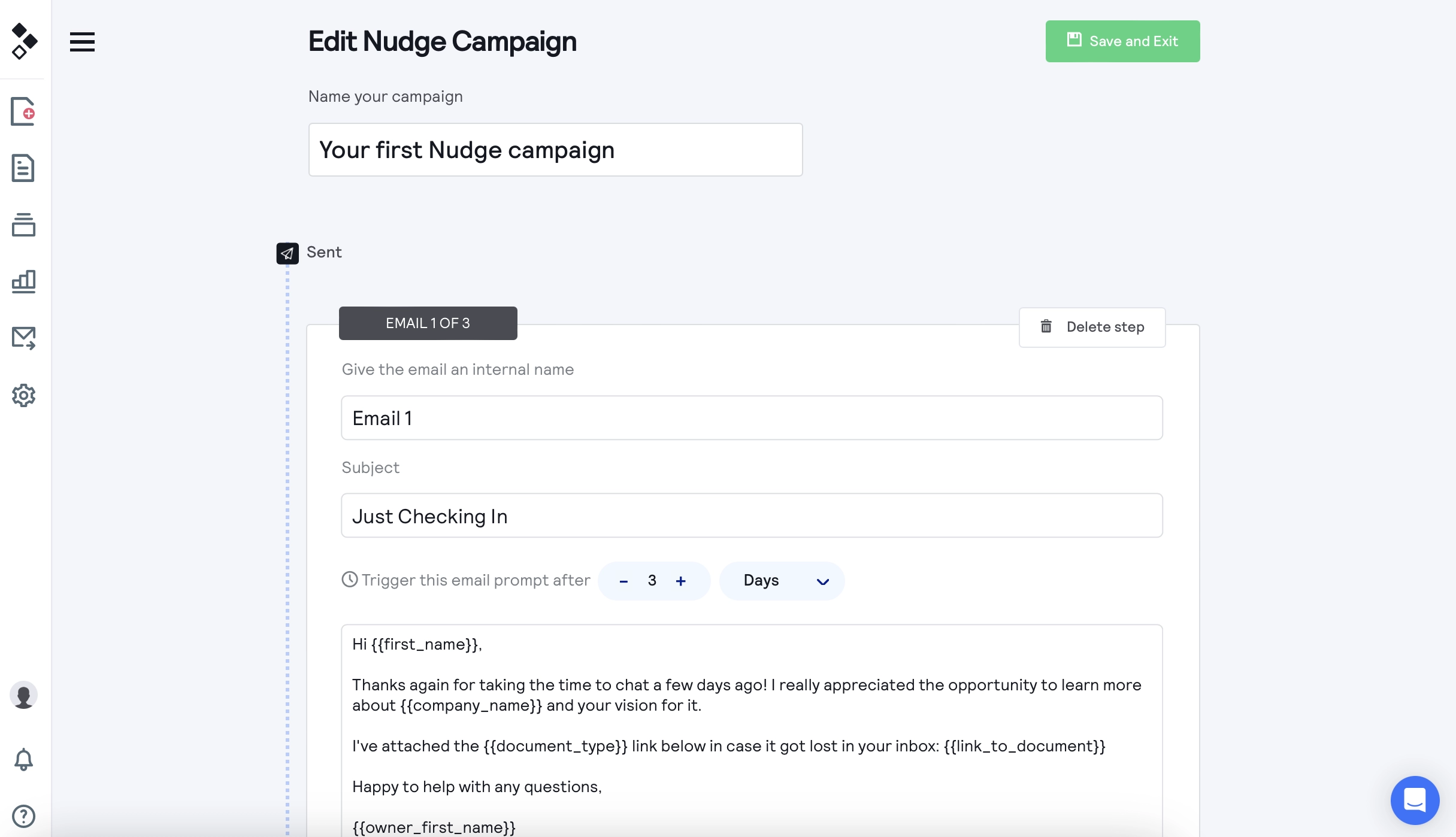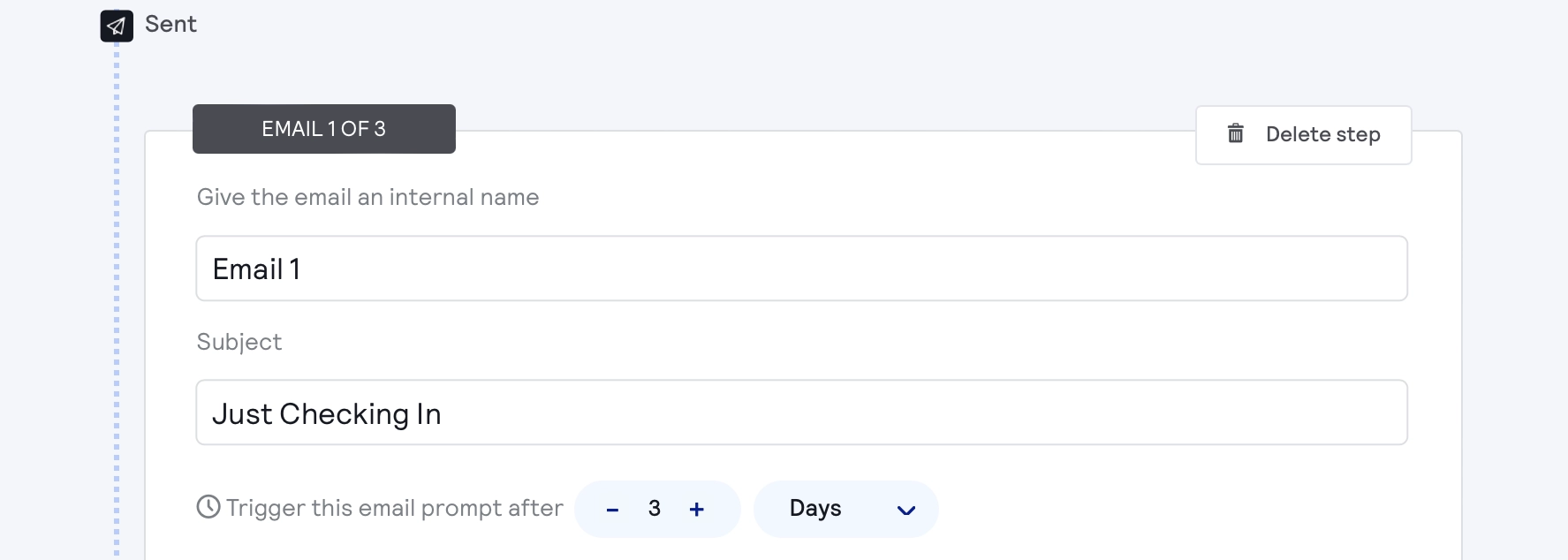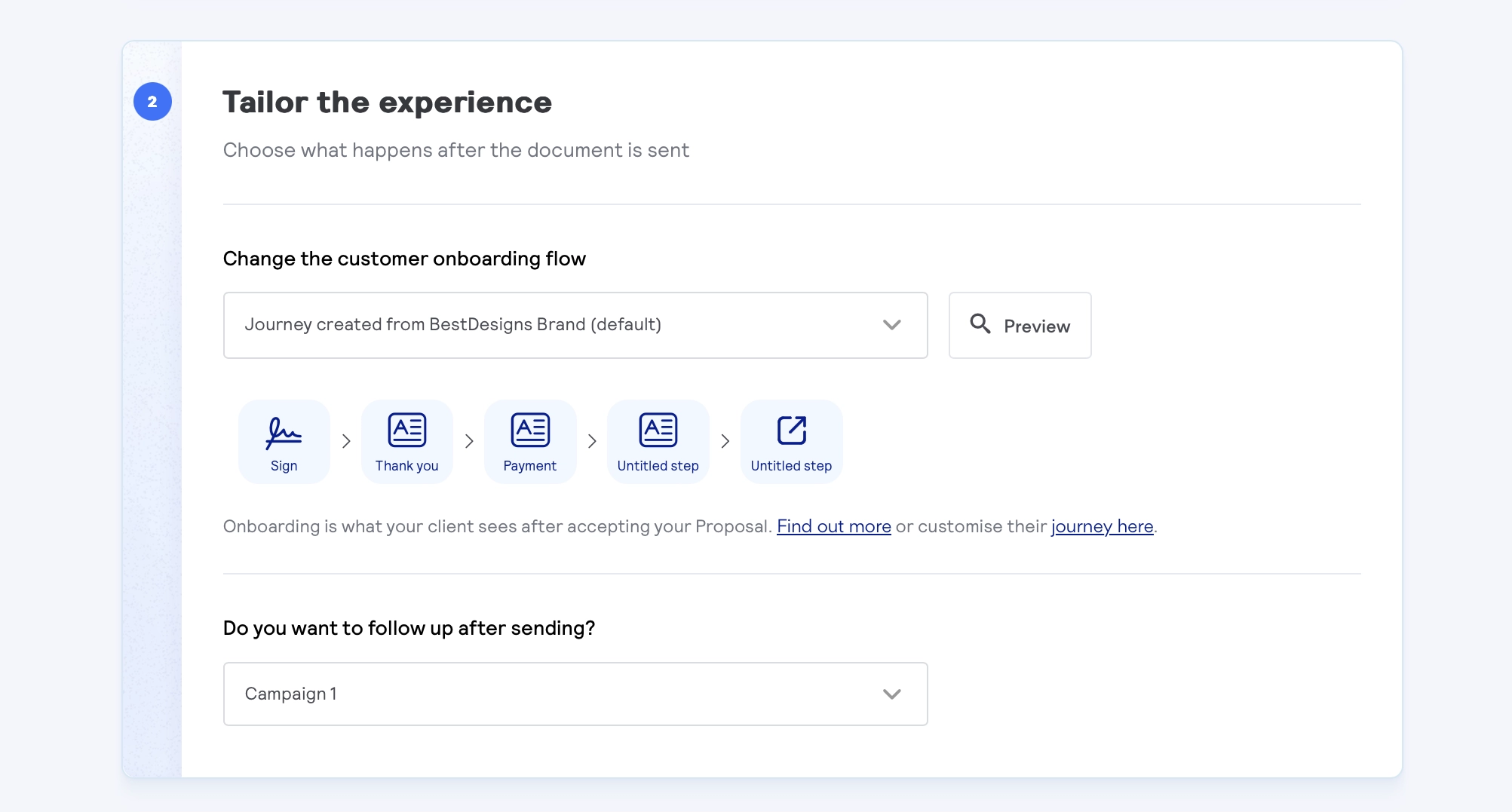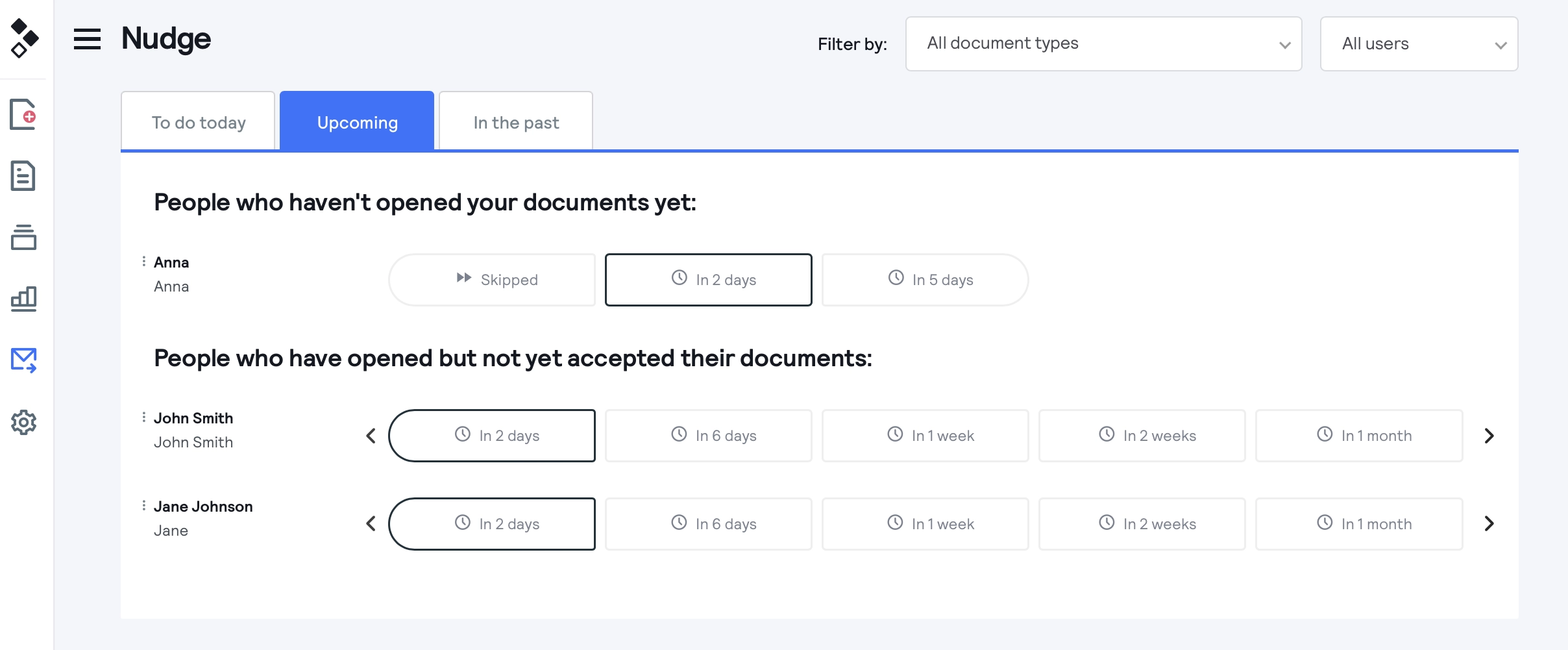Nudge is the perfect middle ground. It gives you the tools to stay on top of your follow-ups while allowing you to customize and control every message before it goes out.
Here’s how it works, along with some tips on making your email campaigns even more effective.
Step 1: Customize your campaign
From your dashboard, navigate to the Nudge icon on the left. From there, you can edit the pre-written campaign we loaded in for you.

To make it your own, simply tweak the content of the emails to match your tone and style. Every part of the campaign is fully customizable.
In addition to the content, you can also adjust the follow-up schedule to make it work with your typical sales cycle. For example, you might want to send a quick check-in email three days after sending, rather than a week.

Once you're happy with your campaign, save the changes and you're ready to add it to a proposal.
Step 2: Add Nudge to your proposal
When editing a document, you'll see a new dropdown under the Tailor the experience step on the setup page. To start following up with Nudge, simply add your campaign to a proposal.

Once you've sent the proposal, Nudge starts remembering to follow up for you. Now, when you navigate to Nudge from your dashboard, you will see an overview of all upcoming follow-ups, as well as those due today and those you've already sent.
Step 3: Start following up
With your campaign set up and attached to your proposal, it’s time to let Nudge do the heavy lifting. Once the proposal is sent, here’s what happens next.
From the Nudge dashboard, you’ll see a clear overview of all your active follow-ups. This includes:
-
Upcoming follow-ups to be sent in the next few days
-
Follow-ups that are due today
-
A history of follow-ups that have already been sent, helping you track your client interactions

Unlike a fully automated campaign, Nudge will never send an email for you. Instead, you get a notification reminding you to follow up.
This makes sure every message is relevant to where the client is in the decision-making process. It also helps you customize the experience by letting you add personal touches, like references to previous conversations or proposal details.
Step 4: Analyze and refine
The more you engage with clients, the better you’ll understand their preferences, pain points, and communication style. Here's how to continuously improve your follow-up process:
1. Review your data
Track how each follow-up email performs. Look at open rates, click-through rates, and response times to identify patterns. This insight will help you fine-tune your subject lines, email content, and timing for maximum impact.
2. Learn from each interaction
Every follow-up is an opportunity to learn. Take note of what works and what doesn’t. If a particular subject line or CTA generates more responses, use those elements in future emails. If a client has specific objections or questions, address them in future follow-ups to show you're listening.
3. Don't be afraid to experiment
Try testing different versions of your emails to see which resonates best with your audience. You could A/B test subject lines, email copy, and CTAs to optimize your outreach. Even small tweaks can make a big difference in your follow-up success.
4. Adjust based on client feedback
Sometimes clients provide direct feedback that can guide your approach. If they express that they prefer a certain type of communication or timing, adjust your follow-up campaign accordingly.
5. Revisit and update
As you progress with more proposals and follow-ups, take time to update your email campaigns. Ensure they remain fresh, relevant, and in line with any offers or changes. The more personalized and relevant your follow-up is, the higher the likelihood of closing the deal.
Tips for creating your own follow-up campaigns
Besides adjusting the pre-written campaign Nudge comes with, you can also start from scratch and create your own. Before you do, make sure to follow these best practices.
1. Write engaging subject lines
Your subject line is the first thing your client sees, and it plays a major role in whether your email gets opened. Keep it short, compelling, and relevant. You could use something like:
-
Quick follow-up on your proposal
-
Any questions about the proposal for {{company_name}}?
-
Next steps for {{company_name}} — let’s chat
The key is to make the subject line feel personal, direct, and like it’s important to the client. Keep it action-oriented and clear so they know exactly what to expect when they open the email.
2. Time your emails strategically
Timing can make or break your email’s success. Avoid sending on a Monday morning when inboxes are cluttered or Friday afternoons when clients are winding down for the weekend. If your client is in a different time zone, be sure to adjust your sending times. Aim to send emails mid-morning or mid-afternoon, when clients are likely to be at their desks and more receptive to your message.
3. Include a clear call-to-action (CTA)
Every follow-up email should guide the client toward the next step in your sales process. Keep your CTAs direct and actionable. For example:
I’d love to discuss how we can move forward. Let me know what time works for you.
I'd be happy to hop on a call and answer any questions.
Click here to view the proposal again and let me know if you have any questions.
To make your CTAs effective, present it as a benefit to them. Instead of simply asking for a response, show them how taking the next step will help them achieve their goals. Make it easy to take action by including the proposal URL or a scheduling link in your email.
4. Stay consistent, but don't go overboard
Following up is all about being persistent without becoming overbearing. That's why it's important to space your emails out and know when to throw in the towel.
A good rule of thumb is to send 2–3 follow-up emails over the course of a few weeks, spaced about 3–7 days apart. After that, it’s important to recognize when it’s time to step back.
If there’s still no response after your final follow-up, consider pausing for a while before reaching out again. You can always revisit the deal at a later date with new information or an updated offer, but respecting their space and timing shows professionalism and leaves the door open for future engagement.
Final thoughts
When you're following up, you’re not just sending emails - you’re building trust and maintaining momentum in the sales process. Consistent, thoughtful follow-ups show the client that their business matters to you.
Use these strategies alongside Nudge to create a follow-up process that feels personal and effective. It’s the perfect combination of structure and human touch to help you close more deals.